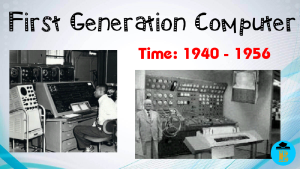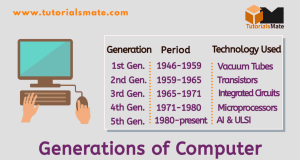Entrance Announcement
MICTE 2080
2080 Magh 07
User:Ashmita shrestha lesson plan 9
Jump to navigation
Jump to search
Class: 9
Subject: computer Science
Topic: Generation of Computer
Time:10 minutes
Period: 3rd
No of Student: 20
Name of School:ABC
Unit: 3
Specific Objective:
Students will learn about the different generations of computers and their characteristics.
Teaching Materials:
- Whiteboard and markers
- Projector (optional)
Introduction (2 minutes):
- Asking Student, "Do you know how computers have evolved over time?" Allow a few students to share their thoughts.
Define Computer Generations:
- Generation in computer terminology is a change in technology a computer is/was being used.
- Write "Generations of Computers" on the board and explain that it refers to different stages in the development of computer technology.
Overview of Computer Generations (3 minutes):
Introduce First Generation:
- The first generation of computers used vacuum tubes and was characterized by large size and limited capabilities.
Show Visual Aids:
- Display images or diagrams representing first-generation computers.

Discuss Subsequent Generations:
- The characteristics of each generation (transistors in the second, integrated circuits in the third, microprocessors in the fourth).
Characteristics of Each Generation (3 minutes):
First Generation:
Second Generation:
- Highlight the transition to transistors, smaller size, and improved speed.
Third Generation:
- The use of integrated circuits, reduced size, and enhanced performance.
Fourth Generation:
- The introduction of microprocessors, leading to smaller, more powerful, and affordable computers.
Conclusion (2 minutes):
Summarize Key Points:
- Summarize the characteristics of each generation of computers.
Interactive Session:
- Encourage students to ask questions and discuss how computers have evolved in their lifetime.
